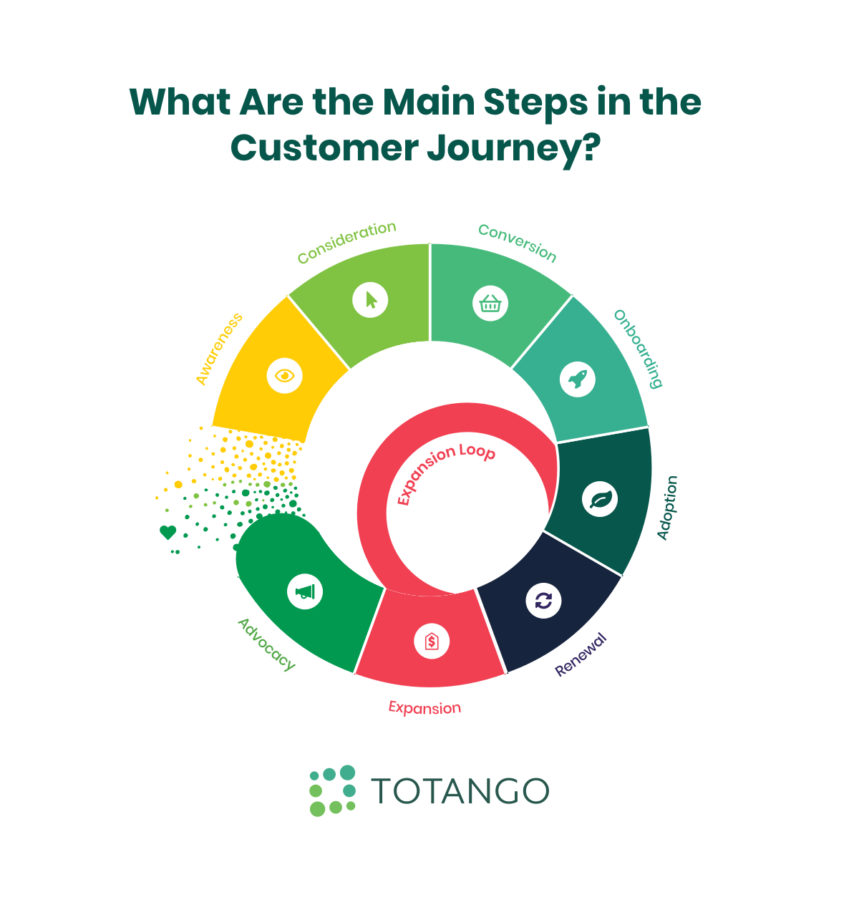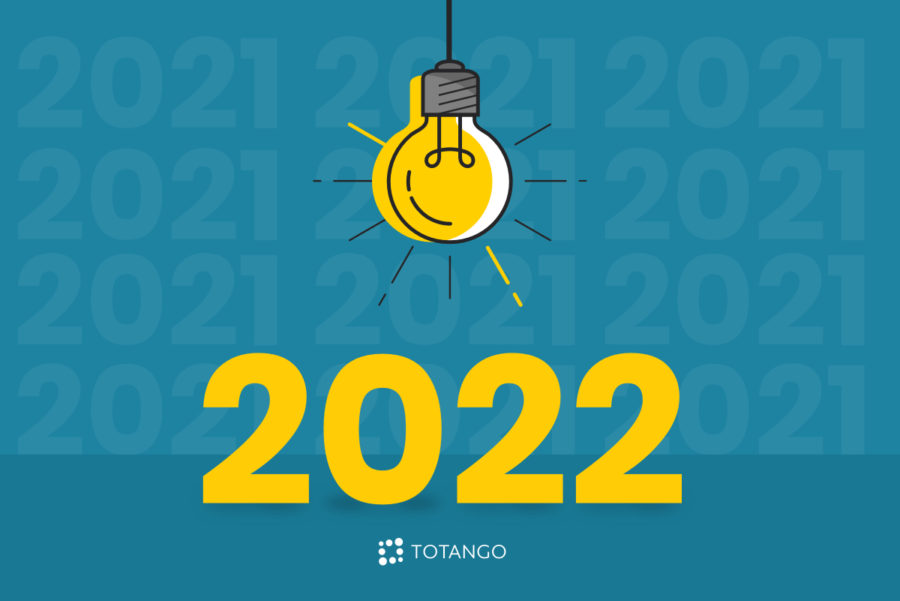What 2021 Taught SaaS Businesses about Customer Success
As the business world adapted to the challenges of 2021, SaaS companies re-examined what customer success means in today’s digital-first environment. In this article, we’ll examine the top three takeaways we’ve gathered over the past year that companies should take to heart going into 2022.
First, we’ll look at how the flywheel model has redefined our understanding of the customer journey. Next, we’ll explore how a digital-first approach has become the new paradigm for customer success. Then, we’ll review how the freemium model has emerged as the optimal way to introduce prospects to SaaS products. Finally, we’ll propose how these three key insights from 2021 can be combined into a unified customer success strategy for winning results in 2022.
1. Today’s SaaS Customer Journey Follows a Flywheel Model
In 2021, we saw the emergence of a new understanding of the customer journey. Older approaches viewed the customer journey from the perspective of the seller, visualizing the customer experience as a linear progression toward sales conversion using the image of a funnel channeling prospects toward sales.
Today’s understanding, however, views the SaaS customer journey map from the customer’s perspective rather than the seller’s perspective, focusing on customer experience. From the customer’s viewpoint, the brand experience begins before the sale and it continues after, with onboarding, escalation and adoption experiences all figuring into the customer’s post-purchase experience. A positive post-sale experience encourages customers to expand their use of a brand’s products, renew their subscriptions and become loyal brand advocates, referring new customers who will soon become loyal advocates as well.
This trend was reflected in our 2021 State of the Customer Success Industry and Salary Report with survey respondents showing an increased focus on expansion and customer advocacy goals, which contribute to a positive post-purchase experience. The report also showed an increase in the growth of collaboration efforts between customer success and other teams throughout the organization with survey participants reporting significant increases in the time they spend collaborating with marketing, sales, service and support teams. Breaking down organizational silos is key to enabling a holistic, orchestrated experience for the customer from the first-touch through purchase, onboarding, adoption and advocacy.
 This holistic, customer-centric approach to the customer journey can be visualized as a flywheel, where brand loyalty and advocacy perpetuate one customer’s lifecycle while spawning new journeys for new customers. This new flywheel metaphor underscores the importance of delivering successful customer outcomes in order to promote customer renewals and referrals.
This holistic, customer-centric approach to the customer journey can be visualized as a flywheel, where brand loyalty and advocacy perpetuate one customer’s lifecycle while spawning new journeys for new customers. This new flywheel metaphor underscores the importance of delivering successful customer outcomes in order to promote customer renewals and referrals.
This way of visualizing customer journeys also provides a framework for automating success outcomes at each stage in the customer’s lifecycle. At each stage in the flywheel journey, desired success outcomes can be defined. Automated workflows can then be set up to implement best practices that promote desired outcomes.
2. Customer Success Now Needs a Digital-first Approach
As pandemic shopping patterns sparked e-commerce surges, brands that had been hesitant about embracing digital transformation realized the need to prioritize a digital-first customer success approach. Conventional customer success approaches had used digital technology on a limited scale. The focus fell on individual success managers delivering manual one-to-one customer support, with technology like automated email playing a supporting role.
Our State of the CS Industry report reflected the difficulties of trying to use conventional CS approaches in this increasingly digital world with 77% of respondents stating that scaling their CS team was the greatest challenge they faced in doing their jobs. It also showed a drastic increase in the number of accounts managed per CSM with 17% of respondents stating that the typical CSM managed more than 200 accounts (up from 5% in 2020). As the pandemic has forced many organizations to do more with fewer resources, a digital-first customer success approach has become necessary.
The digital-first approach places digital automation at the forefront of customer success. Customer data triggers automated workflows that implement best practices tailored to where the customer is in their journey. For example, a customer navigating the onboarding process might receive an automated email providing a link to a tutorial walking them through their next steps. This type of automated assistance handles the majority of routine customer needs, with manual intervention from customer success managers only called upon as needed.
This automated, digital-first approach frees up customer success managers to handle a larger number of customers per manager. Thanks to this increased efficiency, brands can scale up their customer success operations to deliver successful outcomes to a larger volume of online customers.
Meanwhile, customers still enjoy personalized support due to the fact that automated assistance is triggered by individual customer data and needs. The digital-first approach combines the benefits of large-scale automation with the customization of individual personalization.
3. Freemium Marketing Has Become the Leading Tactic for Lead Generation
Use of freemium strategy has long played an important role in SaaS marketing, but recent developments have honed this powerful method into a preferred tactic for lead generation. Experience has gained SaaS marketers practical insight into how to optimize a freemium approach by strategically selecting which features to offer free and which features to limit in order to motivate customers to upgrade to your premium product.
SaaS marketers have also learned how automation can help optimize the deployment of freemium marketing tactics. Freemium users are more inclined to upgrade to premium products when their freemium experience is marked by smooth onboarding, ease of adoption and minimal customer support issues. Strategic use of automation to deliver a satisfying freemium experience on these counts promotes higher premium conversion rates.
For example, using customer data monitoring to automatically detect when freemium customers need support can help freemium users get more value out of your product with less hassle. Future SaaS marketing will make increasing use of this type of automation-assisted optimization of freemium user experience.
Apply the Lessons of 2021 to Thrive in 2022
The past year’s lessons in customer success point toward practical strategic adjustments SaaS companies should make going into 2022. The flywheel model of the customer journey outlines the steps which lead to successful customer outcomes that promote retention and brand advocacy. Taking a digital-first approach to customer success enables you to optimize each of these steps in order to encourage higher retention, expansion, and referral rates. A key step toward this end is optimizing your customers’ freemium experience through a combination of best practices and automation. These three key pieces mutually support each other as part of a unified, automated approach to customer success.
Totango’s platform includes all the tools you need to put the lessons of 2021 into practice and enjoy automated customer success outcomes in 2022. Try it free to experience for yourself how digital-first customer success technology can help you deliver your customers a smooth and satisfying journey that promotes renewals, upgrades, and referrals.

